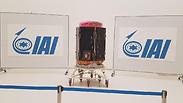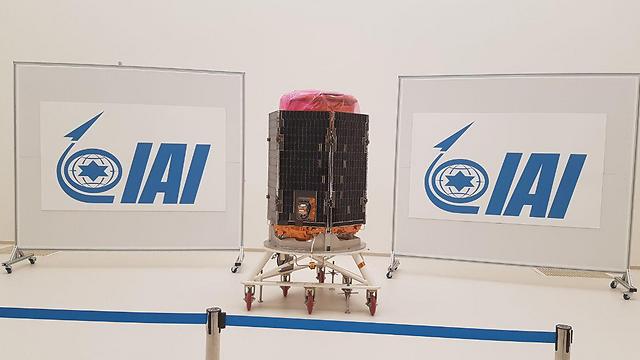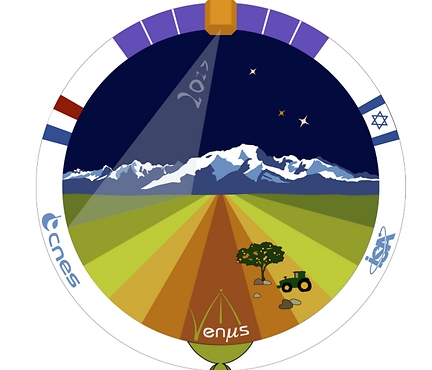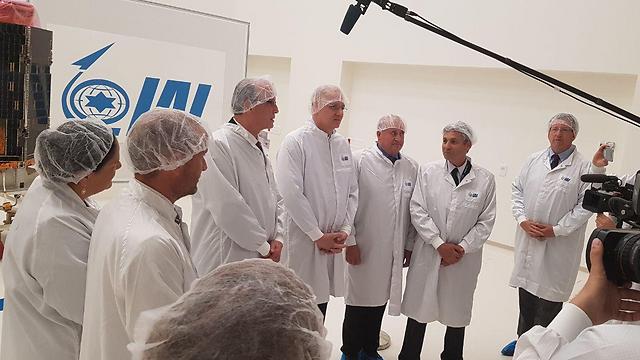

Israeli environmental research satellite launched
The satellite named Venus will monitor fields and plots of land from space for environmental research purposes, while monitoring the state of land, vegetation, forestation, agriculture, water quality and more; it was built by the Israel Aerospace Industries as part of a project of the Israeli and French space agencies.
In an official ceremony held Thursday, Israel Aerospace Industries (IAI) handed the Venus satellite to the Israeli Space Agency at the Ministry of Science and its project partner in the French Space Agency (CNES). The satellite will be integrated with the Arianespace launcher and prepare for launch from French Guiana.
The satellite, a joint project of the Israeli Space Agency and the French Ministry of Science and Space, was built in recent years at a space factory belonging to the IAI, together with Elbit, which developed the telescope and Rafael, which developed the propulsion system.
The satellite will monitor fields and plots of land from space for environmental research purposes, while monitoring the state of land, vegetation, forestation, agriculture, quality of water reservoirs and more. Venus is equipped with a special camera that can absorb details on Earth at 12 wavelengths, including details that are not visible. The satellite will photograph large areas and provide researchers with dozens of images each day, each of which will cover about 700 square kilometers. Once every two days, the satellite will produce photographs of the whole of Israel for use by the researchers. The satellite will weigh 265 kg upon launch and will enter Sun-synchronous orbit within two days of the launch.
Minister of Science and Technology Ophir Akunis said at the ceremony, "Venus is the glory of the Israeli space industry, and I am very proud that the first research satellite sponsored by the government and the Ministry of Science will soon be launched … Collaboration with the French government is further proof of the tremendous appreciation that Israeli technology is receiving worldwide."
IAI's President and CEO, Yossi Weiss, said, "We are pleased to present the Venus research satellite to the Israeli and French space agencies. The best engineers in the field of satellites and space in Israeli industry took part in this unique flag project, which is another technological achievement for IAI in particular and Israeli space industry in general. Our collaboration with France … is a solid basis for continued joint work."
The head of the French Space Agency, Jean-Yves Le Gall, said, "Satellites have a central role today in the study and preservation of the environment and climate, and I am excited to see our top engineers take part in the development of Venus, a mission that will help the international community in tackling climate change. We will continue collaborating in other areas as well."

In an event held at IAI, IAI Director Avi Blassberger presented the satellite's mission patch chosen from dozens of bids in a competition held by the Israeli space agency. The winning patch of Naama Glauber, a computer science student at the Hebrew University, was designed in the spirit of Venus's mission: the colored field at the front is divided into 12 parts, the same as the number of satellite channels; the colors are "earth tones," depicting different agricultural conditions, which is among the mission's objectives; in the background, you can see the Mont Blanc, as a backdrop to the land that symbolizes the partnership with France; Israel is represented through the State's agricultural-pioneering relationship, through the depiction of an orange tree and a tractor; the number 2017 appears as part of the scanning beam, thus expressing progress, technology and innovation; in space, you can see the planet Venus which is the most luminous, followed by Mars (reddish) and above them, Saturn; the Venus logo is worn as part of the design of a ground antenna.
Researchers from Israel and around the world will be able to receive satellite images and conduct research. One of the first research projects to be run on the satellite is that of high school students.
(Translated and edited by N. Elias)

















